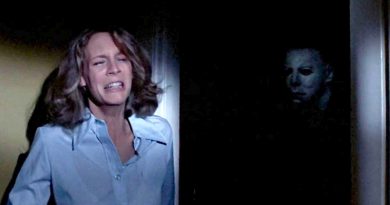Hannibal at 20: An Uneven But Well-Acted Sequel
I can’t believe it’s already been 20 years since Ridley Scott divided the critics in The Silence of the Lambs sequel, Hannibal. I remember when I watched the movie the first time around, it felt over the top and graphically violent than the one seen in Jonathan Demme’s 1991 Oscar-winning predecessor.
Hannibal sure has its moments, notably during the controversial dinner scene involving the heavily-drugged Paul Krendler played by Ray Liotta had the top part of his head sliced open. Nothing is offscreen here as Scott literally wants us to witness the exposing part of Krendler’s brain. At one point, Dr Hannibal Lecter (Anthony Hopkins, slipping into his iconic role back with ease) even sliced a small part of Krendler’s brain and sauteed it on a hot pan for his dinner. Horrifying? Not really and even after recently revisiting the same scene again, it still looks as if Scott is doing it for the sake of how far he could go to push the boundaries of R (18)-rating in terms of shock value.
Interestingly enough, Scott wasn’t the first choice to direct Hannibal. Jonathan Demme, who won an Oscar for Best Director for The Silence of the Lambs, happened to be the original pick back then. Even Jodie Foster, who played FBI agent Clarice Starling in the 1991 movie and screenwriter Ted Tally are both slated to return as well. All three declined to return and that was where Ridley Scott came in. Fresh off from the enormous success of Gladiator, Scott seems both an inspiring choice and a worthy replacement.
While Hannibal ended up being cannibalised by most critics with 39% rotten on Rotten Tomatoes, fans and audiences alike showed up in droves when it made its theatrical debut during the February 9-11, 2001 opening weekend. The sequel made an impressive US$58 million during the first three days. It stayed at the top of the North American box-office chart for 4 weeks before a certain movie called The Mexican starring Brad Pitt and Julia Roberts finally dethroned the sequel. By the end of its theatrical run, Hannibal proved to be a huge hit, grossing over US$351 million against a US$87 million budget in the worldwide box office.
Hannibal‘s mixed result has to do mainly with the way Scott wanted to make the sequel as lurid as possible. A complete polar opposite from Demme’s more restrained approach in The Silence of the Lambs. On paper, it seems like a wise idea not to copycat the same filmmaking approach that would easily turn Hannibal into a mere rehash of the 1991 movie. It was actually a refreshing change of pace but only to a certain extent, with the sequel’s 132-minute length feels like it stretches too much for its own good.
To recap what happened in Hannibal, the sequel sees Clarice Starling (Julianne Moore, replacing Jodie Foster) relegated to a desk job following her botched drug bust that spiralled out of control. From there, Clarice finds herself back to tracking down Lecter, who is still on the loose after the events of the 1991 movie. After receiving a letter from Lecter, it turns out that he is now in Florence disguising as an art curator under the name of Dr Fell.
Meanwhile, Florence detective, Inspector Rinaldo Pazzi (Giancarlo Giannini) is looking to collect a US$3 million reward after learning about Mason Verger’s (an unrecognisable Gary Oldman in heavy prosthetics) bounty on Lecter. Verger, in turn, happens to be a surviving victim whose face was horribly disfigured during his drug therapy session with Lecter. Now, he’s looking for revenge after what Lecter has done to him.
Instead of focusing primarily on the game of cat-and-mouse chase between Clarice and Lecter, Scott chooses to go for multiple directions as he jumps back and forth by adding subplots involving Mason Verger and Rinaldo Pazzi. While Oldman and Giannini deliver solid supporting turns, the additional subplots deflating the tension with an inconsistent pace. This is especially true during the first two acts of the movie, which could have used some serious trimming.
Julianne Moore holds her own here but it still feels like a waste to see her being sidelined for most parts of the movie. Even by the time her story arc picks up in the third act, it looks rushed and a little too late. Besides, part of what The Silence of the Lambs works so well is due to the character dynamics between Clarice Starling and Dr Hannibal Lecter. Something that Hannibal particularly lacks the most.
Whereas the story falls short this time around, Hannibal still benefits from overall good performances. Likewise, Scott pays extra attention to the technical sides, emphasising his signature use of shadows and bleak tones throughout the movie. It’s a far from a great sequel that could have been and definitely an inferior one compared to the much superior Silence of the Lambs.




